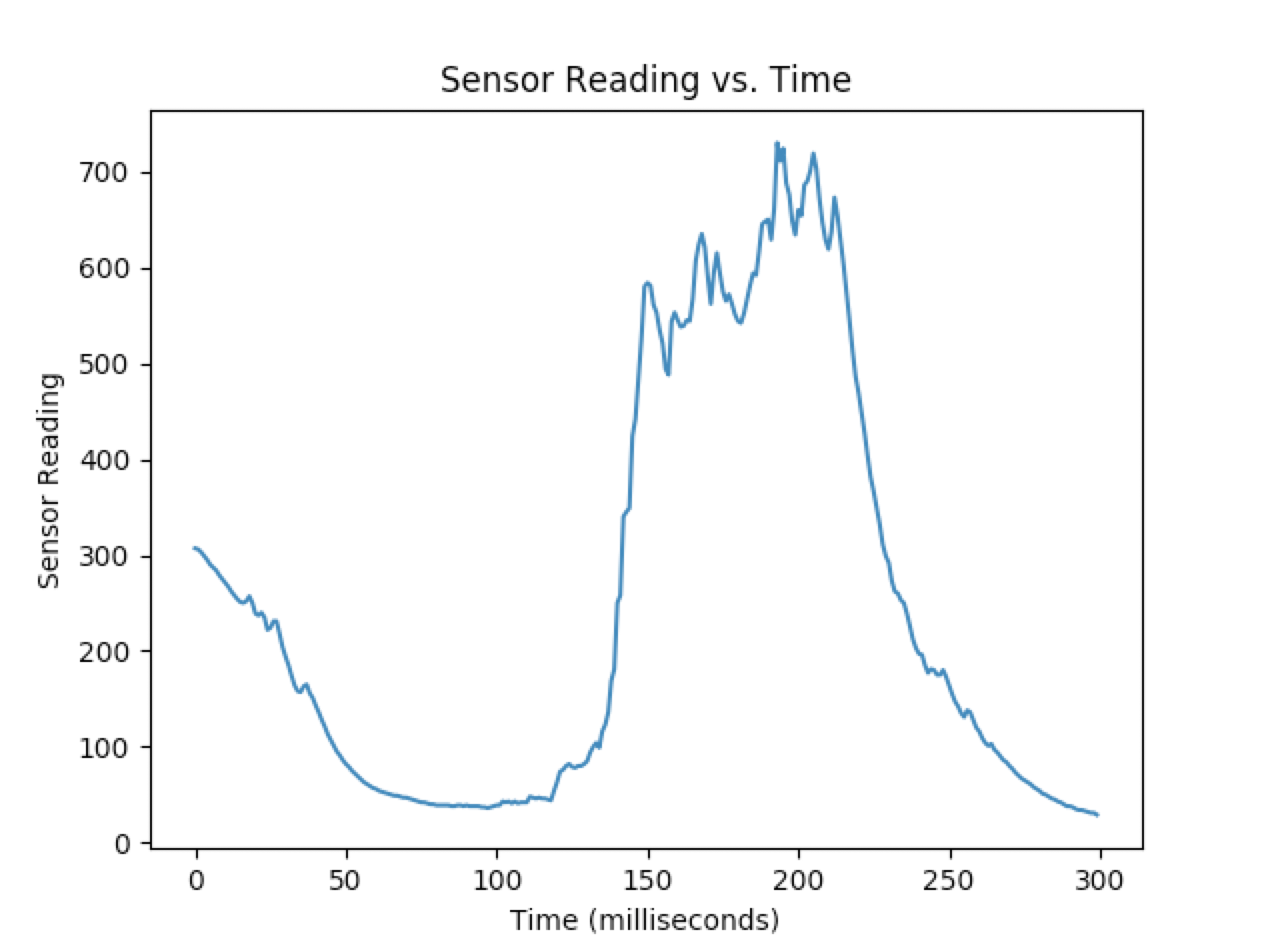Tarana’s Status Update for October 24th
This week I started off finding a way to integrate Arduino and python, such that data could be recorded in one and immediately sent to the other in real time. Using serial communication, I was able to open up a port on my computer and continuously write to it in one program and read from it in another. Once I had communication between the two programs working continuously, I wrote a python script to collect trials of pilot data. You can find it here.
I ran into a hiccup this week and had to resolve some of the wiring on the hardware, as the reference and ground nodes were shorting together. Once the wiring was fixed, I was able to use the system to collect data. I recorded some initial data using a single electrode on the flexor carpi ulnaris muscle, which reacts most prominently when the muscle is flexed or extended (pointing left or right). Promisingly, it reacts in different ways to each of these actions, giving us space to write an accurate classifier capable of extracting unique features for every electrode in the electrode array.
Because of the remote nature of our class, part of the script exports data recorded into a csv format, so that both Kayla and I can work on parsing and analyzing it since we are not in the same place to work on it together. After preliminary parsing of the pilot data from a single electrode, the next thing on the agenda is our first basic integration test, where a single electrode (on the flexor carpi ulnaris) will be used to verify our approach. Once we have this step completed, we will be able to verify our communication protocols between each module in our system, making the complete integration of our entire system much easier down the line.
I am currently running behind schedule with the data collection, and I plan to work overtime this week to catch back up to speed. This includes recording data for our entire system, such that individual electrodes can be analyzed relative to each other, and preprocessing that data using PCA, LDA, STFT, and the Wavelet transform, to analyze what is the best algorithm for extracting features in the first place to be used for classification later in the pipeline.

Here’s an example of a single trial of data collection from the flexor carpi ulnaris during a wrist flexation. With all the data collected, we can start extracting features and classifying.